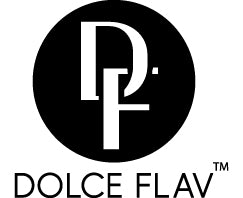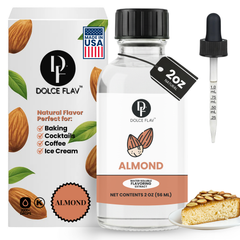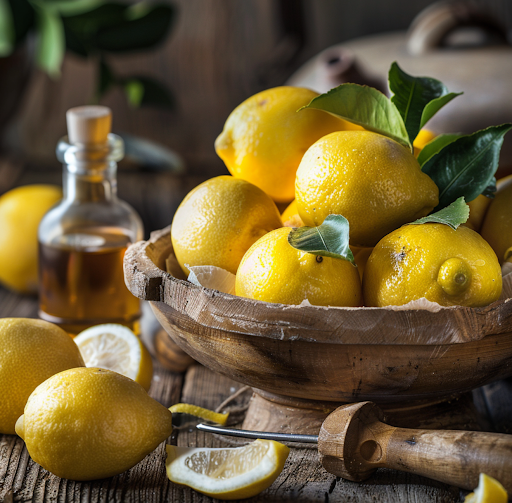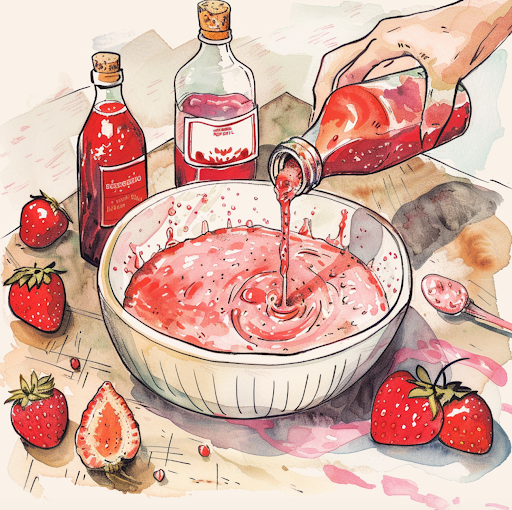
Extracts, flavors, and flavorings serve distinct purposes in enhancing food and beverages. Extracts are concentrated forms of essence obtained by extracting parts of raw materials and capturing essential oils or flavors.
They embody the pure taste and aroma of their source. Flavors define the sensory impressions we experience, stemming from natural, artificial, or natural-identical sources. Flavorings, on the other hand, are additives used to impart taste or aroma, ranging from natural and artificial to specialized types like smoke flavorings.
Each plays an essential role in culinary innovation and the creation of unique taste experiences. Exploring these differences reveals the art and science behind our sensory delights.
Key Takeaways
Extracts are made by isolating essential oils or flavors from raw materials using a solvent.
Flavor is the sensory impression of food or other substances, determined by the chemical senses of taste and smell.
Flavoring refers to additives used to impart or modify the taste or aroma of food and beverages.
Natural flavorings are derived from plant or animal sources, while artificial flavorings are created to mimic natural flavors.
Essential oils and oleoresins are concentrated forms of flavoring used to provide intense flavor experiences in culinary applications.
Defining the Basics
To lay a solid foundation, it is essential to precisely define the terms extract, flavor, and flavoring, as they are often mistakenly used interchangeably. An extract is a substance made by extracting a part of a raw material, often using a solvent such as ethanol or water.
This process concentrates the crucial components, such as essential oils or flavors, from herbs, spices, fruits, or other ingredients. The resulting liquid encapsulates the essence of the source material's taste or aroma, offering a potent representation of its original flavor profile.
Flavor, in contrast, refers to the sensory impression of a food or other substance, and is determined by the chemical senses of taste and smell. It is a more general term, encompassing the overall perception created by a product's ingredients, including but not limited to extracts.
Flavoring, meanwhile, is an additive used to impart taste or aroma to food and beverages. It can be derived from natural sources, as with extracts, or synthesized in a laboratory. Flavorings are designed to enhance or modify the flavor of a product, and can include both extracts and other compounds that contribute to the overall flavor profile.
The Making of Extracts
Understanding the foundational definitions of extracts, flavors, and flavorings sets the stage for exploring how extracts are meticulously produced. Extracts, which are concentrated forms of flavor derived from natural sources, involve a precise and methodical process to capture the essence of the original ingredient. This process guarantees the true taste and aroma are retained, providing a potent and authentic flavoring agent for various culinary and manufacturing applications.
The making of extracts involves several critical steps:
Selection of Source Material : High-quality, fresh ingredients are chosen as the source of the extract. This could be anything from vanilla beans and herbs to fruits and nuts.
Extraction Process : The chosen material is then subjected to a solvent, usually alcohol, which effectively pulls the flavor compounds out of the material.
Straining and Filtering : Once the extraction process has reached its desired potency, the mixture is strained and filtered to remove solid particles, leaving behind a clear, concentrated liquid.
Concentration Adjustment : The extract may be further concentrated or diluted to achieve the desired strength.
Quality Control and Packaging : Finally, the extract undergoes stringent quality control checks before being bottled and labeled for distribution.
This meticulous process results in a pure, robust extract that is integral for adding depth and complexity to culinary creations and manufactured products.
Exploring Flavors
Exploring the realm of flavors reveals a complex and diverse world that greatly enhances the sensory experience of food and beverages. Each flavor, whether naturally occurring or artificially created, plays a vital role in how we perceive and enjoy what we consume. This exploration goes beyond the mere identification of taste, delving into how flavors interact with our senses, creating an intricate palette of experiences that can evoke memories, and emotions, and even influence our food preferences and choices.
The science behind flavors is as intriguing as it is complex. It encompasses a broad range of disciplines, including chemistry, biology, and psychology, to understand how flavors are perceived by the human brain. This understanding is essential for the development of new flavors and the enhancement of existing ones. It allows food scientists and culinary professionals to craft experiences that can surprise and delight the palate.
Moreover, the exploration of flavors is not static; it evolves with societal trends and technological advancements. New flavors are constantly being discovered and developed, catering to an ever-expanding array of consumer preferences and dietary needs. This dynamic field guarantees that the culinary landscape continues to be vibrant, diverse, and tantalizingly unpredictable.
Types of Flavorings
Having surveyed the vast and complex landscape of flavors, it is now pertinent to focus on the specific categories of flavorings utilized in culinary arts and food production. Flavorings, pivotal in enhancing the taste and aroma of food, can be broadly classified into several types, each serving unique purposes in gastronomy and food manufacturing. These categories offer an expansive palette from which creators can draw to craft memorable and distinctive culinary experiences.
Natural Flavorings : Derived directly from plant or animal sources through processes like distillation or roasting, these aim to capture the essence of the original ingredient.
Artificial Flavorings : Chemically created to mimic natural flavors, these are used when extracting the flavor from its source is impractical, costly, or impossible.
Nature-Identical Flavorings : Synthetically produced to closely match the chemical composition of natural flavors, offering a cost-effective alternative without compromising on taste.
Smoke Flavorings : Created by condensing smoke from wood chips, these impart a smoky aroma and taste to food, often used in meats and sauces.
Essential Oils and Oleoresins : Highly concentrated extracts used in minute quantities to provide intense flavoring to food products, ranging from confectionery to beverages.
Each of these flavoring types plays a critical role in the development and enhancement of food products, offering a spectrum of tastes and aromas to meet diverse consumer preferences.
Practical Applications
How do these diverse flavorings translate into real-world culinary and food production applications? Understanding the distinctions among extracts, flavors, and flavorings is vital for food technologists, chefs, and home cooks alike, enabling them to select the most appropriate type for their specific needs. Extracts, being highly concentrated and derived from natural sources, are typically used in small quantities to infuse dishes and baked goods with intense, authentic flavors. Vanilla extract in homemade ice cream or almond extract in marzipan are prime examples where the natural profiles shine through.
Flavors, especially artificial ones, find their utility in large-scale food production where consistency, cost-effectiveness, and longevity are paramount. These synthesized flavors are staples in candies, soft drinks, and processed snacks, offering tastes that are sometimes not feasible with natural extracts due to cost or availability constraints.
Flavorings, encompassing both natural and artificial types, are versatile tools in culinary innovation. They allow for the creation of unique taste experiences in gourmet cooking and artisanal food products. The nuanced use of these components can elevate the sensory appeal of dishes, making them stand out in the competitive food industry. Understanding their practical applications helps in crafting recipes that are both tastefully compelling and economically viable.
What Does Dolce Foglia Flavours Have to Offer?
Learn More About Us
Discover the Essence of Tradition with Dolce Foglia in Los Angeles
Tucked away in the vibrant heart of Los Angeles, California, lies a story woven with the threads of family legacy and rich, enduring flavors - the story of Dolce Foglia. More than just a provider of high-quality flavor extracts, Dolce Foglia is a testament to a deep-rooted passion for purity in taste, a legacy carefully nurtured and passed down through generations. It's where tradition meets modern innovation, creating a unique tapestry of flavors that resonate with many.
At the core of Dolce Foglia's identity is the dynamic cultural landscape of Los Angeles itself. The city's diverse cultural backdrop inspires us to create an array of premium flavors, catering to the palates of culinary aficionados across the globe. Our brand stands as a beacon for those who seek unparalleled quality and authenticity in their culinary ventures.
Embracing both tradition and evolution, Dolce Foglia is dedicated to refining our craft. Through meticulous selection of the finest ingredients and collaboration with industry experts, we continually strive to surpass the expectations of our customers. It's a journey of constant experimentation and innovation, ensuring that every product we offer remains at the pinnacle of quality and taste.
Our commitment is simple yet profound: to provide unmatched quality coupled with a legacy you can trust. We invite you on a journey with Dolce Foglia, to become a part of our evolving story. Here, every drop is more than just flavor; it's a celebration of exceptional taste that brings people together.
Join us at Dolce Foglia, where we cherish the heritage of flavor and embrace the future of culinary excellence.
Let yourself be tempted by our Bakers Dozen

Description ( Bakers Dozen )
Special Offer: Buy 12 Flavors, Get 1 Free!
Indulge in a diverse palette of flavors and find your new favorite today. For a limited time, when you explore the richness of our twelve distinct flavors, you'll receive one extra flavor at no additional cost! Our collection includes:
Banana
Blueberry
Cinnamon
Lemon
Orange Creamsicle
Passion Fruit
Peach
Peppermint
Raspberry
Strawberry
Pistachio
Watermelon
Bonus Flavor: Coconut
Our Guarantee: Premium Quality Features
Kosher: Compliant with kosher food standards.
Unsweetened: Enjoy natural flavors without the added sweetness.
American Made: Proudly produced in the USA.
Keto-Friendly: Perfect for your low-carb lifestyle.
Zero Sugar: Indulge without sugar concerns.
Alcohol-Free: Suitable for all ages and lifestyles.
Embrace a healthier choice without compromising on taste. Explore our vibrant array of flavors now!
→ For a wider selection of our products, feel free to explore our shop.
→ Find our product on Amazon ( Dolce Foglia Baker's Dozen Pack - 2 oz x 13 - 1 free flavor - Multi-purpose flavoring oil for making candy, extracts, and flavorings for baking, lip balm, ice cream, ultra-concentrated ingredients )
- FLAVORS
- POWDER
At Dolce Foglia, the conversation about the art of flavors never ends. Nestled in the bustling heart of Los Angeles, we stand out as the city's leading purveyor of artisanal flavor extracts. Got queries? We're here to provide the answers.
Visit Us At:
333 North Mission Road, Suite B,
Los Angeles, CA 90033
-Reach Out To Us:
-For Customer Support: (213)575-9444
-For General Inquiries: Info@dolcefoglia.com
Last Word
In conclusion, the art and science behind extracts, flavors, and flavorings play a crucial role in the culinary world, enhancing not only the taste but also the overall sensory experience of food and beverages. These distinct elements, whether derived naturally or artificially, contribute to a uniquely crafted palette of tastes, allowing for the creation of novel and diverse culinary innovations. Understanding these elements and their practical applications is vital for both professional and amateur cooks.
Born out of a deep-rooted family tradition for food and flavors, Dolce Foglia exemplifies a commitment to the art of culinary taste. Offering a wide range of premium quality flavor extracts inspired by the diverse cultural landscape of Los Angeles, Dolce Foglia is more than a provider; it's a catalyst for culinary creativity.
The brand is persistent in nurturing a legacy of unparalleled taste and authenticity, inexhaustibly seeking to provide its customers with the finest quality extracts. Thus, those embarking on a journey with Dolce Foglia are sure to experience an exceptional celebration of flavors, blending heritage with the future of culinary excellence.
Products Featured In This Blog






